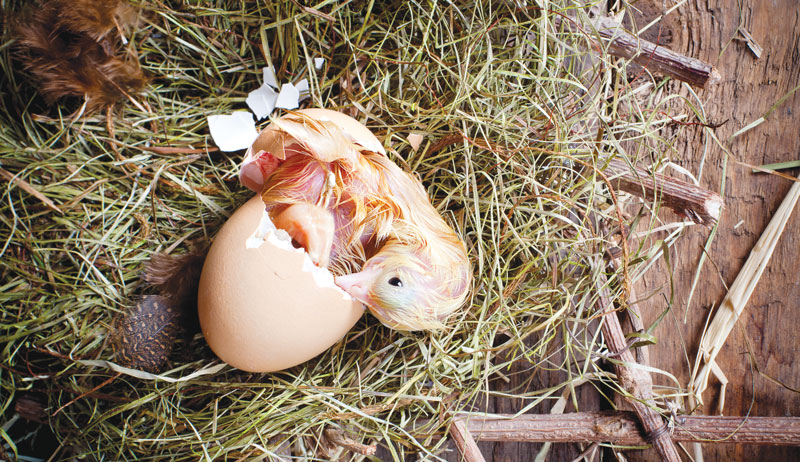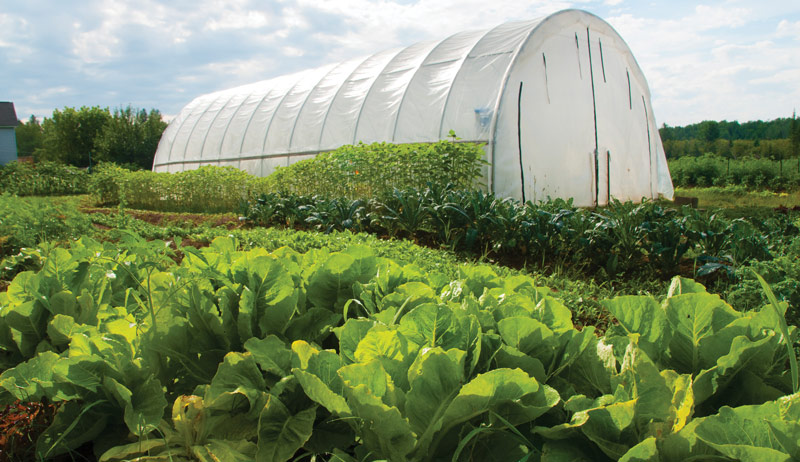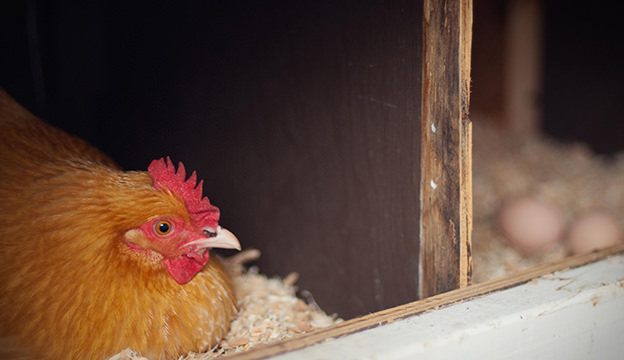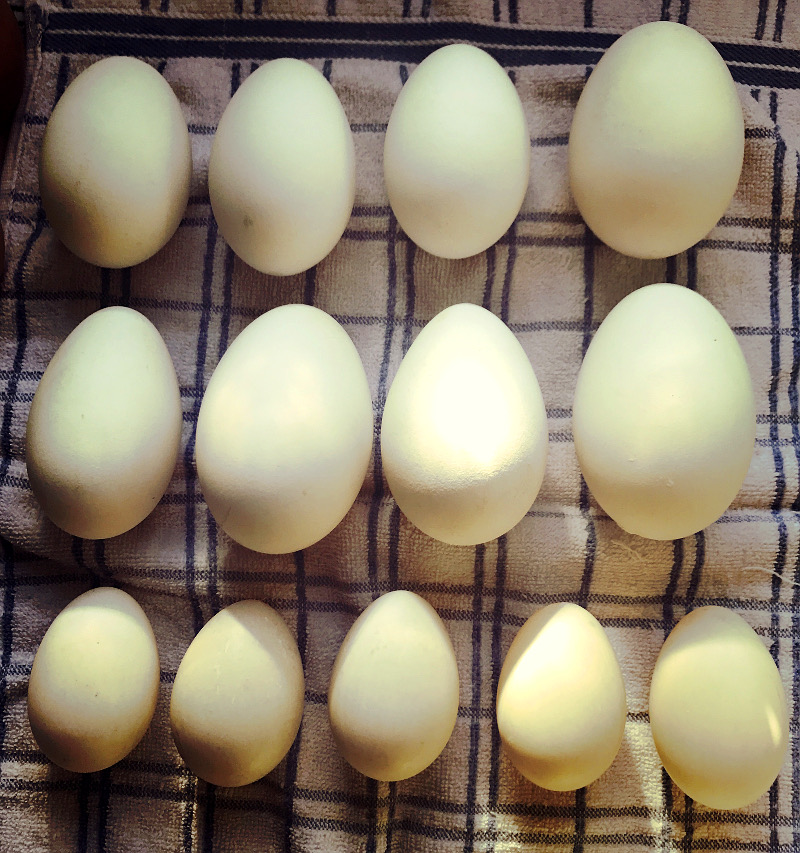Frozen chicken eggs in winter can be tough on a chicken keeper and ultimately crack if left out. Chickens usually do just fine when the mercury falls and the cold weather sets in. Many breeds are cold-hardy and can live in an unheated coop all winter in temperatures below freezing.
Eggs, on the other hand, don’t fare as well. As the egg temperature drops, the yolk and white expand, pressing against the shell. Eventually, visible cracks appear in the shell or tiny hairline cracks occur that aren’t visible to the naked eye.
Can You Eat Frozen Chicken Eggs?
Although frozen chicken eggs are usually still fine to eat as long as the inner membrane hasn’t broken (just allow them to slowly defrost in the refrigerator), the texture can change a bit and you might find them a bit grainy. Put any frozen eggs you collect in a bowl to defrost (not in an egg carton), because if there are any hairline cracks you didn’t detect, as the egg defrosts, the egg white can seep out and make a mess.
However, if the eggshell has visibly cracked and the membrane is broken, it’s best to discard the egg. There’s too much chance that bacteria or other germs have touched the oozing whites and therefore contaminated the entire egg.
Even though bacteria grow more slowly at cold temperatures, freezing won’t kill all bacteria, so there is still a chance of contamination. A slightly cracked egg with an intact membrane is probably still safe to eat, but to err on the side of caution, I recommend cooking it well, and then feeding it to your chickens instead. There is no use taking any chances, and the birds will appreciate the treat.

How Do I Store Chicken Eggs in the Winter?
Normally, farm-fresh eggs can be left out at room temperature for a few weeks on the kitchen counter and still be fine to eat because the bloom or natural coating on the eggshell keeps out air and bacteria. However, if you collect eggs that are cold to the touch, condensation will probably form on the shells once they start to warm up, which can make the properties of the bloom ineffective, so it’s good practice to refrigerate your eggs in the winter.
You don’t need to wash them until you’re ready to use them. One nice thing about winter: All the mud and chicken manure is usually frozen, so eggs generally stay cleaner.
Five Ways to Prevent Frozen Chicken Eggs
Preventing frozen chicken eggs can be a challenge in the winter if you live in a cold climate. Unless you stay home and can check your nesting boxes many times throughout the day, you’ll find frozen eggs. Although some chicken keepers add artificial light in coops to nudge their chickens to continue laying through the winter, I prefer not to for several reasons—partly because I believe chickens need that natural break that their bodies signal them to take at the onset of shorter days. That way, egg production naturally slows considerably, and my chances of having eggs being laid, much less frozen, is greatly reduced.
However, new layers will continue to lay through their first winter without added light, and even older hens will lay the occasional egg, so it’s best to be prepared in case you have hens laying through the cold winter months. These are simple things you can do to mitigate the problem of frozen eggs.
1. Check the Coop Often
Collect your eggs from the coop as often as possible during the day. Depending on the temperature where you live, that might mean every couple of hours. If you work outside the house all day, enlist a neighbor who might be home to check for eggs several times a day. Egg collecting is an easy job for kids, so if your children leave for school after you leave for work or get home from school before you arrive home, be sure they check the boxes and collect any eggs they find.
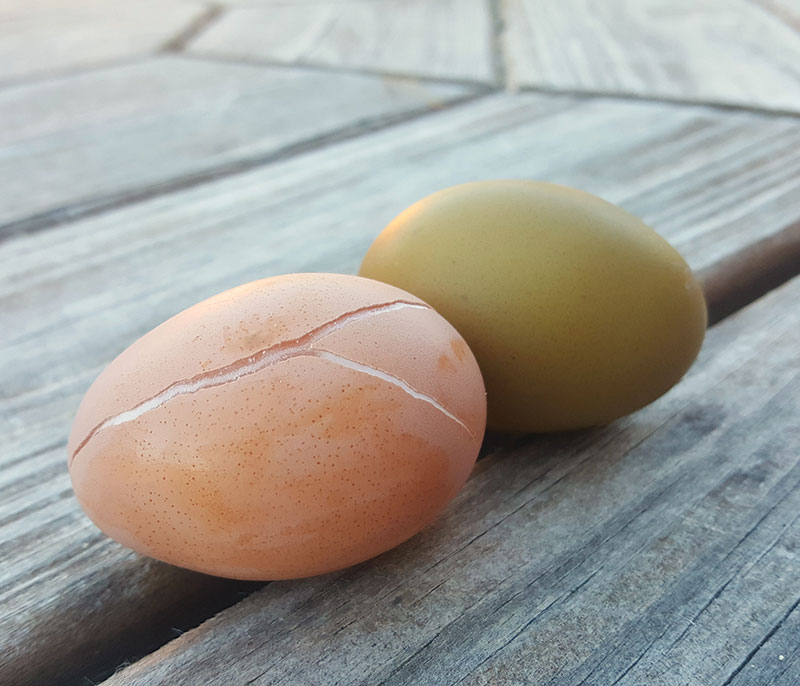
2. Consider the Nesting Box Location
If you live in a cold climate and are building or buying a new coop, think about the location of your coop. Position your coop in full sun with the nesting boxes facing east. This way, the boxes are warmed from the rays of the rising sun early each morning. Interior boxes, meaning those enclosed within the coop, will stay warmer than those attached to the outside of the coop.
3. Insulate the Nesting Boxes
An egg is almost 100 degrees when it emerges from the hen, so it will take several hours to cool sufficiently to freeze. The warmer you keep the nesting boxes, the longer it will take to cool.
Adding insulation to your boxes is a great idea, but be sure the insulation is protected so your chickens can’t peck at it and eat it. If that’s not an option, line the sides of the boxes with a few layers of cardboard cut to size and fill each box with a nice thick layer of straw.
If you normally use shavings in your nesting boxes, consider switching to straw for the winter. Straw is hollow, and those hollow shafts will retain the warmth from the hen’s body after she leaves the nest, keeping the boxes warmer longer. If your nesting boxes are the type that jut out from the outside wall of the coop, consider wrapping them in dark plastic tarps and stacking hay or straw bales around them to further insulate them.
4. Add Curtains
Hanging curtains across the front of the nesting boxes can also help keep the boxes warmer longer and prevent frozen chicken eggs. Use an old wool blanket or sweater, a piece of burlap or even empty feedbags for maximum heat retention. It doesn’t have to be fancy; you can simply staple a length of fabric to the top of each box, leaving a small space open for your chickens to enter and exit.
5. Don’t Discourage a Broody Hen
Chickens don’t often go broody in the winter, but if you find yourself with a broody hen, consider letting her sit. She’ll keep the eggs warm for you until you can collect them.

5 Frozen Chicken Egg Handling Tips
1. If an egg is cold to the touch, refrigerate it and then rinse it in warm water before using.
2. If an egg is frozen but has not cracked, go ahead and refrigerate it. It should be perfectly fine to eat after it defrosts. Again, remember to rinse it before cooking with it.
3. If the egg is cracked but the membrane seems intact and the egg isn’t visibly dirty, you can still use it, but cook it right away. Be sure to scramble and cook it well – no soft-boiled or eggs sunny-side up please!
4. If the egg is cracked, the membrane broken and the white oozing out, toss the egg or cook it right away and feed it to your chickens or dog. Their stomachs and digestive tracts are better able to handle bacteria than we as humans are.
5. If the egg is cracked, oozing and dirty, then discard it. There is no sense in taking unnecessary chances.
Is Supplemental Heat a Good Idea?
Heating your chicken coop to prevent frozen chicken eggs might seem like the most logical way to keep your chickens warm and prevent eggs from freezing. However, think twice before installing a heat lamp in the coop. Each winter, chicken coops, barns and even homes burn down because heat lamps start fires in coops. Lamps can accidentally fall or be knocked down, and bulbs can shatter. The combination of electricity, a hot bulb, dry coop litter and chickens is a volatile mix that too often leads to property damage and death. Even a regular light bulb hung over nesting boxes will usually generate enough heat to prevent eggs from freezing, but that can also be a fire hazard and a risk I’m not sure is worth taking.
A safer way to heat your coop is to use a radiant panel heater, but I don’t recommend that either. The basic danger of heating your coop? If you lose power, your chickens haven’t been allowed to slowly become accustomed to the falling temperatures, so they will face extreme cold and be unprepared for it. Like most animals that live outside, they handle cold temperatures by being exposed to them gradually.
Think About Adding Ducks to Your Flock
I do have one last suggestion if frozen chicken eggs are a problem: Think about adding some ducks to your flock. Ducks lay eggs during the hour or so before dawn. The beauty of this is that you can then normally collect the eggs when you open up the coop and feed your flock before heading off to work, thereby not having to worry about eggs being left outside all day.
Ducks lay eggs on the coop floor in the corner and like to cover them with straw to hide them. Of course, this helps keep their eggs warmer longer. Duck eggs are also about 30 percent larger than chicken eggs, so it takes them longer to cool down. In all my years raising chickens and ducks, I have found a few frozen chicken eggs each winter but never a frozen duck egg.
Ducks and chickens can coexist peacefully in the coop, eat the same feed and share the same run. Ducks also tend to continue laying through the winter without added light in the coop. So think about expanding your flock to include a few ducks.
Even if ducks aren’t in the cards for you, instead of heating your coop, consider trying a few of the other methods mentioned in this article to keep your eggs from freezing. Eggs do become a precious commodity in the winter for most of us chicken keepers who don’t use artificial lighting. As production drops off considerably, no one wants any eggs to go to waste, so it’s important to prevent the few eggs your chickens lay in the cold months from freezing.
This article about preventing frozen chicken eggs was written for Chickens magazine. Click here to subscribe.






